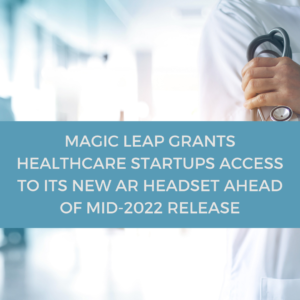Apprentice Raises $100 Million to Adapt Pharma Supply Chains to the Omicron Variant

The funding follows a $24 million Series B round raised in November 2020. Throughout 2020 and 2021, Apprentice helped drug makers keep production on-track despite pandemic imposed restrictions and transition their facilities to produce mRNA vaccines.. mRNA vaccines are the first large-scale application of cutting-edge cell therapies which require a profoundly different production process. Apprentice’s cloud-based manufacturing platform helped legacy facilities transform at a radical pace – directly supporting creation of an estimated 370 million COVID-19 vaccine doses and counting. Since the beginning of the pandemic, Apprentice experienced unprecedented growth including 12x annual recurring revenue growth, 516% net customer retention, and 6x increase in employee headcount.
“We had the right technology at the right time to help our customers keep making critical medicine and vaccines in unprecedented conditions. As the world continues to navigate COVID-19, we will help our customers adapt to new challenges” said Angelo Stracquatanio , CEO of Apprentice. “With the advent of cell and gene therapies, pharma is undergoing a transformation while coping with massive supply chain disruption. Our mission is to deliver modern technology that’s flexible, powerful, and regulatory-compliant so manufacturers can make these new therapies better, faster, and more reliably no matter the circumstance – to the benefit of patients everywhere.”
“As evidenced by their phenomenal growth, Apprentice alone has the modern cloud technology and mobile-first approach manufacturers need to keep their supply chains running during the pandemic,” said Abhi Arun, Managing Partner from Alkeon Capital. “We believe that they can bring life sciences into the modern era and help it transition to the therapeutics of the future. We couldn’t be more excited to partner with the team on this bold vision.”
Apprentice will use this capital to support pharma manufacturers for the duration of the pandemic, including scaling its operations, team, and platform to ensure supply chain adaptability. Already used by customers on five continents, the company will further expand in Europe and Asia. Apprentice will also launch the first cloud-native manufacturing execution system (MES), extending the success of its Tandem collaboration product, which gives remote colleagues a first-person perspective into what an operator is seeing and doing in-suite. The MES integrates augmented reality, voice recognition, and artificial intelligence into wearable, mobile, and desktop devices to offer a system that reduces human error and inefficiency across all three stages of production: pre-clinical, clinical, and commercial. Differentiated by its modern cloud infrastructure which enables a mobile-first approach, superior user experience, and no-code configuration, the MES has the flexibility to support the product and process development of the pre-clinical and clinical stages and the power to meet the scale and compliance of the commercial stage. With one manufacturing platform spanning the entire lifecycle, pharma manufacturers are better equipped to make next generation therapies through seamless transfer of process knowledge across teams and sites, real-time quality tracking, and reduction of production downtime.
About Apprentice
Apprentice’s disruptive technology helps pharma manufacturers get medicine to patients faster by providing one platform to turn molecules into medicine. The company’s intelligent cloud platform integrates augmented reality, voice recognition, and artificial intelligence into wearable, mobile, and desktop devices to offer a virtual collaboration application and a robust manufacturing and lab execution system that reduce human error and inefficiency in the drug production process. Learn how 15 of the top 20 US Pharma companies use Apprentice to accelerate high-quality production of drugs for diseases of all types, from COVID to cancer, at www.apprentice.io
Read Apprentice’s AREA member profile
About Alkeon Capital
Alkeon Capital is a global investment firm that invests in private and public growth and technology companies and category definers. With more than two decades of experience focusing on People and Innovation, Alkeon works closely with disruptive private companies to help them expand their addressable market, scale efficiently, and seamlessly crossover to the public markets. Alkeon’s goal is to be a long-term and accretive partner to all its portfolio companies along their private and public journey.








